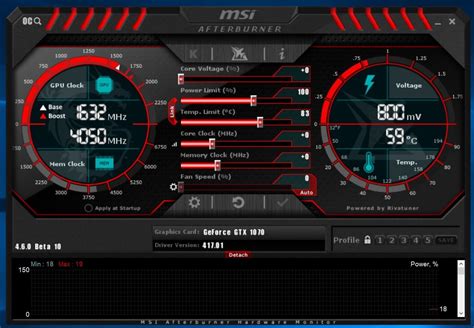Understanding Overclocking and Its Benefits
Overclocking is the process of pushing your computer's processor beyond its factory settings to achieve higher performance. It allows you to unlock the full potential of your hardware, particularly the Intel Core i9-13900K processor. Overclocking can result in improved gaming experiences, faster rendering times, and enhanced overall system performance.
Prerequisites for Overclocking
Before delving into the overclocking process, it is crucial to ensure you have the proper hardware and software. You will need a motherboard with solid power delivery, a reliable cooling solution, and a stable power supply unit. Additionally, make sure you have a stable and up-to-date BIOS version installed on your motherboard.
Preparing your Computer for Overclocking
1. Update your BIOS: Visit the manufacturer's website and download the latest BIOS version compatible with your motherboard model. Follow the provided instructions to update your BIOS.2. Monitor temperatures: Install temperature-monitoring software like CPUID HWMonitor or Core Temp. These tools will help you monitor the temperatures of your CPU during overclocking to ensure it remains within safe limits.3. Stress test your system: Perform stress tests using software such as Prime95 or AIDA64 to identify any stability issues before overclocking. This step is essential to ensure the longevity of your hardware.
Overclocking Step-by-Step
1. Enter BIOS: Restart your computer and continuously press the appropriate key to enter the BIOS. The key varies depending on your motherboard manufacturer (common keys include Del, F2, or F10).2. Disable power-saving features: Locate the "CPU Power Management" or similar option in your BIOS and disable power-saving features such as Intel SpeedStep, C-State, and Turbo Boost. Disabling these features will ensure a stable overclocking experience.3. Adjust CPU voltage: Look for the "CPU Voltage" or "Vcore" setting in your BIOS. Increase the voltage gradually until the desired overclocking stability is achieved. Keep an eye on the temperatures to avoid overheating.4. Increase the CPU multiplier: Locate the "CPU Ratio" or "Multiplier" option in your BIOS. Increase this value in small increments (e.g., 100MHz at a time) until you reach the desired clock speed. Stress test the system and monitor temperatures after each adjustment.5. Fine-tune memory settings: Access your BIOS's memory settings and ensure they are set to match the specifications of your RAM modules. Adjust the frequency, timings, and voltage accordingly for optimal performance.6. Stress testing and stability checks: After each adjustment, stress test your system using tools like Prime95 or AIDA64 for a few hours. If your system remains stable without overheating, proceed to the next step. If stability issues occur, revert to the previous settings and adjust accordingly.7. Monitor temperatures and system stability: While stress testing, keep an eye on your CPU temperatures using software like Core Temp or CPUID HWMonitor. Ensure the temperatures remain below the recommended maximum value to protect your hardware.
Conclusion
Overclocking your Intel Core i9-13900K processor can provide a significant performance boost, but it requires careful planning and patience. By following this step-by-step guide, you can safely overclock your CPU and unlock its full capabilities. Remember to monitor temperatures, perform stress tests, and ensure system stability throughout the process. Enjoy the enhanced performance and improved gaming experiences that come with a successful overclocking endeavor.

Note: "Overclocking PC" image is for illustrative purposes only.
No comments:
Post a Comment